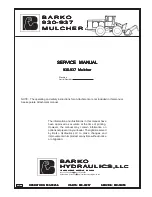
System glossary
43
Location
Place where the reader is located.
Material
A material has the same attributes as an instrument, with quantity and expiry date as additional properties.
Organisation
Organisation will be taken into the use if same activity needs to be used several times in the same process.
Process
A process can be set for each article group. A process is an ordered list of activities which need to be executed
for an article. Activities can be configured to be executed only once and marked as required or optional.
Activities not part of a process are thus not allowed for articles belonging to the group, except in activities
without a process.
You can define many options for the process, e.g. “maintenance reminder” or “sterile expiration”. When a
maintenance reminder is set for a process, skipping that activity a set number of times will result in a user
warning. When the sterile expiration is set for an activity (usually autoclaving) in a process which validates the
sterility, the next non-sterile activity will give the error message if the time limit for the “sterile expiration” is
exceeded.
Reader
A reader is an UHF (Ultra High Frequency) RFID (Radio Frequency Identification) (Gen2) reader device which
communicates with a server. A reader needs to be configured for allowed activities which can be performed on
it.
Table and unit readers are available. A table reader is meant for multi reading, while a unit reader is meant for
reading one article at a time.
Reading transaction
Reading transactions are stored centrally on a server. A reading transaction contains for example the information
of the date and time of the reading and which activity was performed.
Server
Communicates with the readers. Logs activities and e.g. verifies activity processes. All communication is initiated
by the reader, i.e. the server can only send information to the readers as responses to messages from the
readers.
Sets
Article set
An article set contains individual (tagged) articles. Once set for an article, all activities must contain all articles
from a set. A process can disable the set enforcement for some (optional) activities.
Example:
A set can contain cutting and non-cutting instruments. The process for the cutting instruments includes a
sharpening activity, which is not applicable to the non-cutting instruments. In this case, the set enforcement can
be disabled for the sharpening activity, as it cannot be performed on all the instruments in the set.
The container (cassette) of a set can be tagged, in which case the cassette must also remain the same. This is
optional.
Template set
Defines a set of instruments, identified by the instrument code and quantity. A template set can be thought of as
a “loose” set. Set enforcement disabling applies to template sets the same way as normal sets.
A tagged container should be defined for a template set. Alternatively, the user can define one template set
without tag. This means that then each reading must match the content of the defined set without a tag.






































